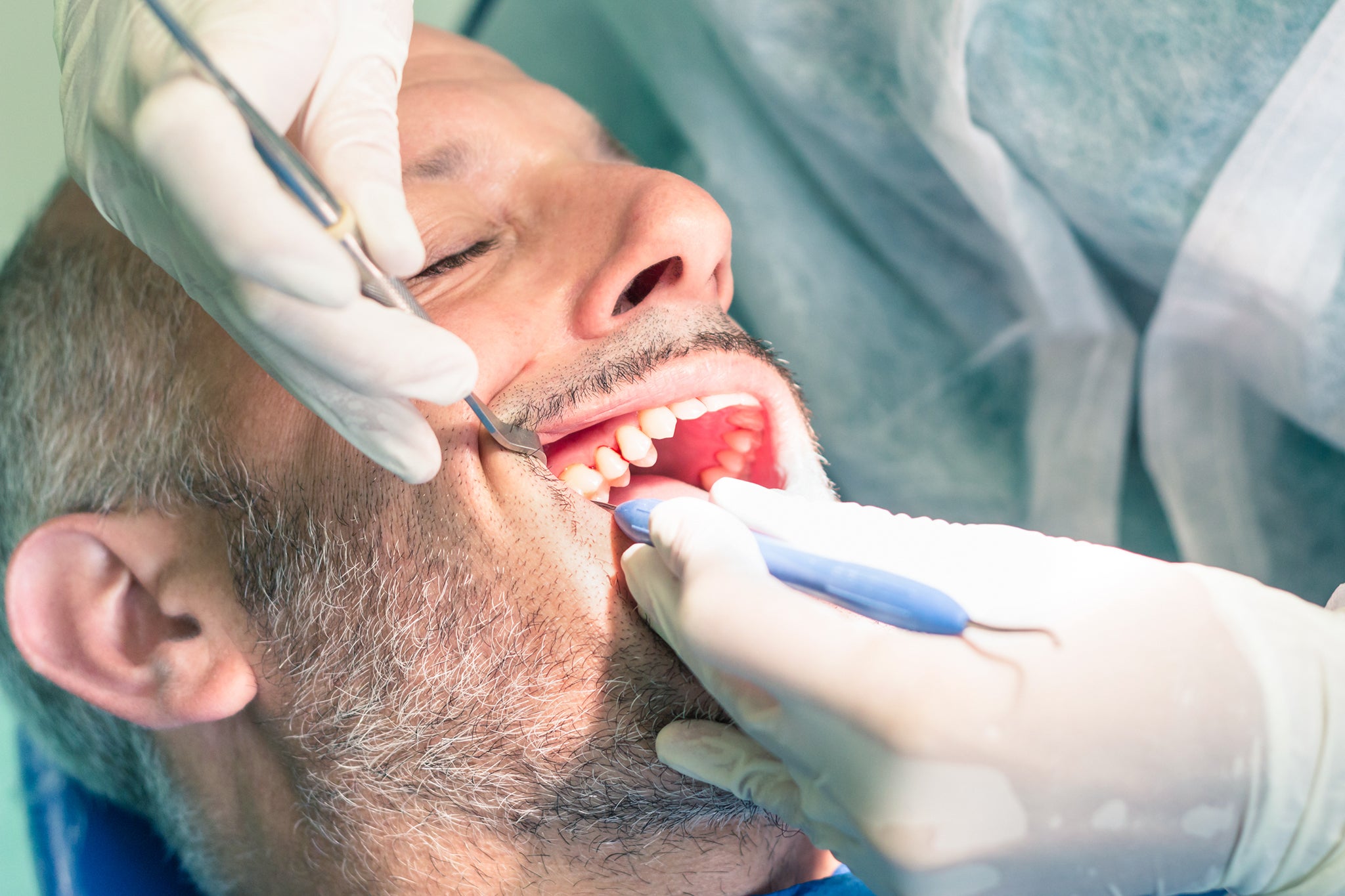
Interdental Oral Hygiene: Stay on Top of the Evidence
Over the last few decades and in more recent years, several studies have looked at the relative efficacy of commonly available interdental cleaning devices – interdental brushes (IDBs), rubber interdental cleaners (RICs) and floss – for the prevention and treatment of periodontal disease. The question is, how effective is each of these tools and which one is most likely to drive patient compliance?
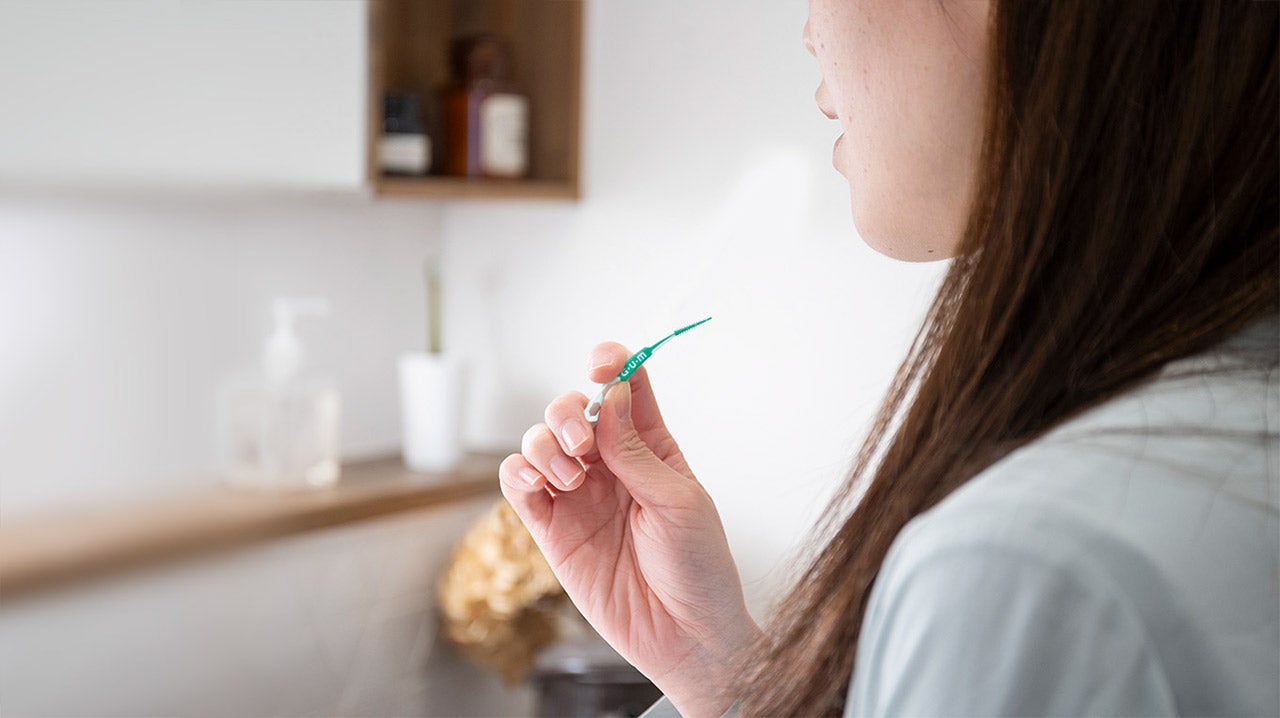
To find out, read on and watch our Virtual Training modules which include two landmark studies and expert commentary from Dr. Filippo Graziani, Professor of Periodontology at the University of Pisa and past President of the EFP.

Only best-in-class evidence
When it comes to interdental cleaning devices, the oral health profession is not poor in data. Cognizant of this, we chose to give you an overview of the state of the evidence on interdental cleaning devices with an exclusive focus on best-in-class clinical data, meaning randomized controlled trials (RCTs), systematic reviews and meta-analyses. We selected studies that focused on commonly available interdental cleaning devices, namely floss, IDBs and RICs. Water- and air-driven options were not considered because of their higher cost and more limited availability. Papers were selected according to whether they compared the efficacy of the devices at controlling plaque for prevention of gum disease in individuals with healthy mouths or in treating gum disease in patients with gingivitis or periodontitis [1].

Ease of use and effectiveness of IDBs and RICs are leading to a new standard of care
The evidence reviewed is unequivocal – IDBs and RICs are better than floss [2] [3] [4] [5] [6]. Indeed, both tools are associated with a significant reduction in interdental plaque and gingival inflammation. Moreover, evaluation of patient acceptance has revealed that patients find IDBs and RICs easier to use than floss [3] [4] [5] [6]. What could be the implications for clinical practice? If the aim is to increase patient adoption of interdental cleaning and to improve outcomes, IDBs and RICs are probably first choice, while recommending floss might be limited to the tightest interdental spaces.

Want to learn more about today’s evidence base and the science of oral hygiene clinical studies? Watch Module 1 of our animated Virtual Training on interdental cleaning.
For the prevention of gum disease, IDBs and RICs yield better outcomes than floss
In young periodontally healthy subjects, studies have confirmed that space permitting, IDBs [7] [8] and RICs are more effective than floss in preventing gum disease [4] [6] [9]. An intervention with IDBs and RICs has an impact on all clinically relevant parameters, from interdental plaque to gum bleeding and gum inflammation.
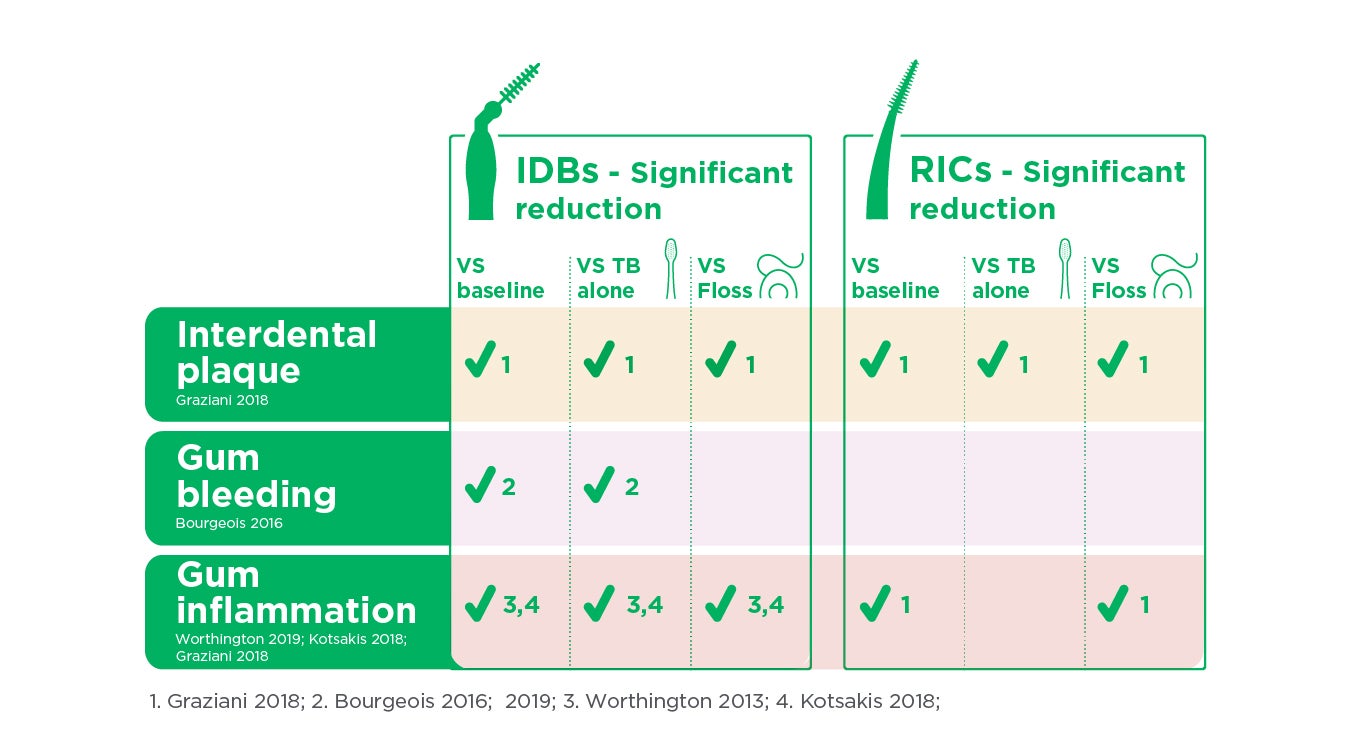
A large body of evidence demonstrates that periodontally healthy patients can benefit from interdental cleaning, and that – interdental space permitting – IDBs and RICs might be recommended to all periodontally healthy patients.
To review the evidence on the effectiveness of IDBs and RICs in preventing periodontal disease, watch Module 2 of our Virtual Training.
IDBs and RICs are both effective in reducing clinical signs of gum disease
Well-designed RCTs and the latest evidence-based guidelines from the EFP indicate that IDBs are the gold standard – the ‘best’ interdental cleaning tool – in particular when it comes to treating periodontal disease [5]. IDBs are the tool that can best fill the interdental space and the most effective for plaque removal. Their efficacy clearly stands out when compared with floss [1] [2] [3] [4] [5] [6] [7] [8].
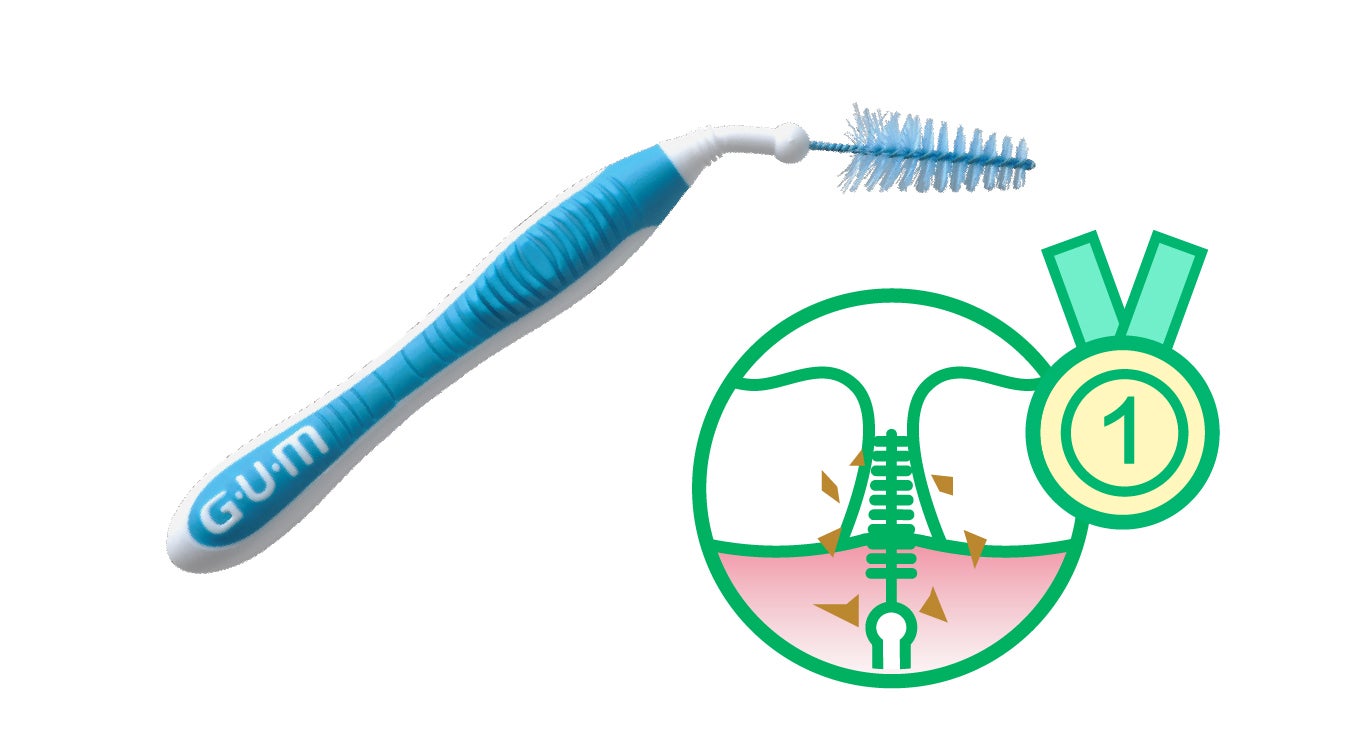
A 2018 landmark RCT [6] in patients with experimental gingivitis, showed that RICs can yield similar outcomes to IDBs in the management of gum disease. RICs, however, were found to be more effective in reducing gingival inflammation in the approximal sites accessible by both RICs and IDBs, caused less abrasion of the gingiva, and were appreciated more by the participants. The study authors concluded that their effectiveness was closely tied to their ease of use.
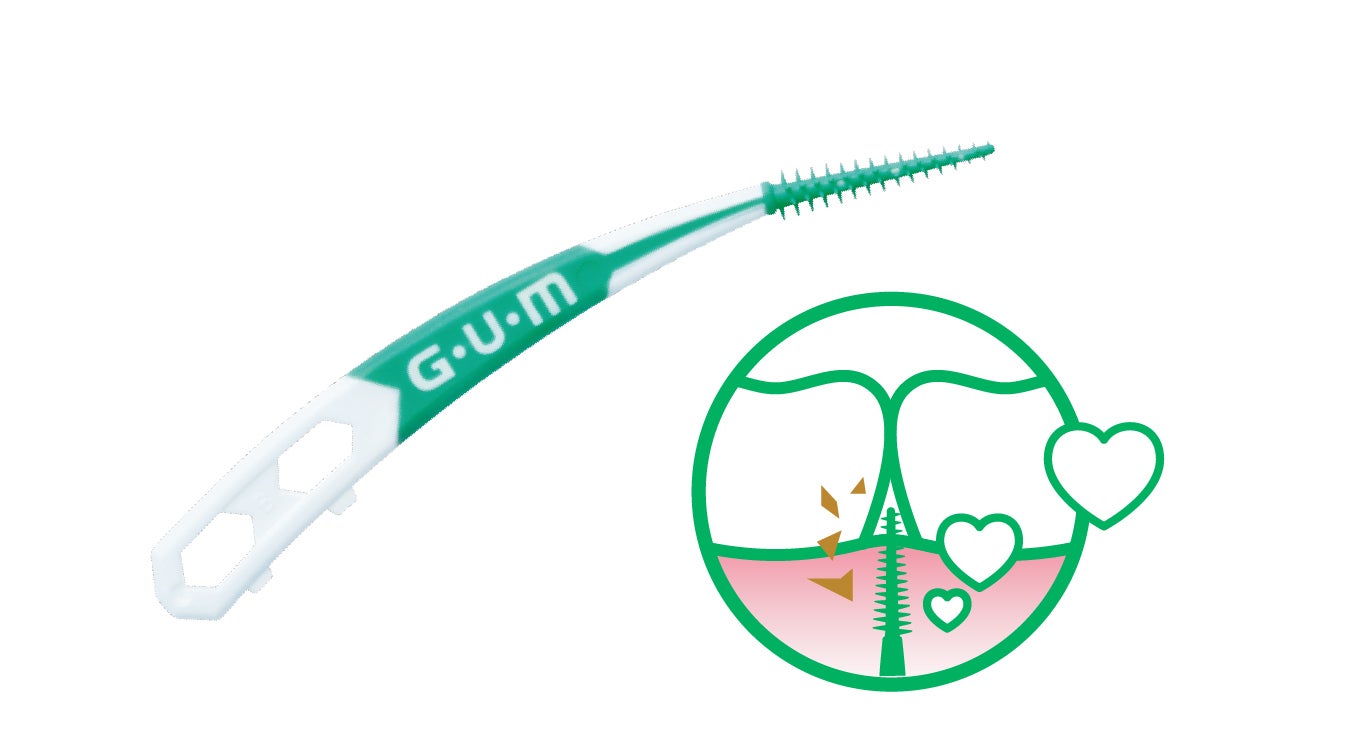
A combination of RICs and IDBs might be the best recommendation for more compliant patients. For the less compliant, easier-to-use RICs – associated with less bleeding and less gingival abrasion – may help to promote early adoption.
Want to take a closer a look at the effectiveness of IDBs and RICs in the management of gum disease? Watch Module 3 of our Virtual Training.
The compliance challenge – ease of use is key
While we know that IDBs are the ‘best’ interdental tool in absolute terms, what can we expect in terms of everyday compliance? A particular interdental tool might be the ‘best’ objectively, but when you factor in patient preferences and behaviours, the picture may start to look a bit different…
As you well know, ensuring patient compliance with interdental cleaning recommendations is one of the biggest challenges in oral care [10]. From lack of motivation to dexterity, there are many factors which can impact a patient’s level of compliance.


Indeed, in the latest guidelines from the EFP, Professor Mariano Sanz and co-authors remind us that “patient acceptance is crucial for sustained long-term use of interdental cleaning devices”, and that “the number of devices has to be limited with respect to the ability of the patient to cope with this diversity” [5].
RICs are the patient-preferred tool as they are even easier to use than gold standard IDBs
Two recent RCTs suggest that patient acceptance is even greater with RICs than with IDBs, for both periodontally healthy patients [4] and patients with gum disease [6]. Indeed, they are as effective as IDBs in removing plaque while causing less abrasion than other tools.

Significantly, new RCT evidence suggests that RICs are even easier and more comfortable to use and cause less pain on tender gums than IDBs [4] [6] [14]. Finally, guidelines agree that RICs “are highly accepted by patients” [5].
Want to find out more about how ease of use drives compliance and what this means for dental practice? Watch Module 4 of our animated Virtual Training.
[1] “Interdental cleaning to prevent and treat gum disease: state of the evidence“ An Oral Health White Paper Series | N°2, © Sunstar Europe Sàrl, Sunstar Professional, version 2, February 2020.
[2] Kotsakis GA, Lian Q, Ioannou AL, Michalowicz BS, John MT, Chu H. A network meta-analysis of interproximal oral hygiene methods in the reduction of clinical indices of inflammation. J Periodontol 2018;89:558-570.
[3] Christou V, Timmerman MF, Van der Velden U, Van der Weijden FA. Comparison of different approaches of interdental oral hygiene: interdental brushes versus dental floss. J Periodontol 1998;69:759-64.
[4] Graziani F, Palazzolo A, Gennai S, Karapetsa D, Giuca MR, Cei S, Filice N, Petrini M, Nisi M. Interdental plaque reduction after use of different devices in young subjects with intact papilla: A randomized clinical trial. Int J Dent Hyg 2018;16:389-396.
[5] Sanz M, Herrera D, Kebschull M, et al; On behalf of the EFP Workshop Participants and Methodological Consultants. “Treatment of stage I–III periodontitis—The EFP S3 level clinical practice guideline”. J Clin Periodontol. 2020;47:4–60.
[6] Hennequin-Hoenderdos NL, van der Sluijs E, van der Weijden GA, Slot DE. Efficacy of a rubber bristles interdental cleaner compared to an interdental brush on dental plaque, gingival bleeding and gingival abrasion: A randomized clinical trial. Int J Dent Hyg 2018;16:380-388.
[7] Slot, D. E., Valkenburg, C., & van der Weijden, F. Mechanical plaque removal of periodontal maintenance patients: A systematic review and network meta‐analysis. Journal of Clinical Periodontology, 47(Suppl 22), 107–124 2020.
[8] Worthington HV, MacDonald L, Pericic TP, Sambunjak D, Johnson TM, Imai P, Clarkson JE. Home use of interdental cleaning devices, in addition to toothbrushing, for preventing and controlling periodontal diseases and dental caries. Cochrane Database of Systematic Reviews. 2019(4).
[9] Ng Ethan and Lim Lum Peng“An Overview of Different Interdental Cleaning Aids and Their Effectiveness » Dent J (Basel). 2019 Jun; 7(2): 56.
[10] Jepsen S, Machiulskiene V. et al “Prevention and control of dental caries and periodontal diseases at individual and population level: consensus report of group 3 of joint EFP/ORCA workshop on the boundaries between caries and periodontal diseases. J Clin Periodontol 2017;44 Suppl 18:S85-s93.
[11] Noorlin I, Watts TL. A comparison of the efficacy and ease of use of dental floss and interproximal brushes in a randomised split mouth trial incorporating an assessment of subgingival plaque. Oral Health Prev Dent 2007;5:13-8.
[12] Needleman I, Suvan J, Moles DR, Pimlott J. A systematic review of professional mechanical plaque removal for prevention of periodontal diseases. J Clin Periodontol 2005;32 Suppl 6:229-82.
[13] Wilder RS, Bray KS. Improving periodontal outcomes: merging clinical and behavioral science. Periodontol 2000 2016;71:65-81.
[14] Abouassi T, Woelber JP, Holst K, Stampf S, Doerfer CE, Hellwig E, Ratka-Kruger P. Clinical efficacy and patients' acceptance of a rubber interdental bristle. A randomized controlled trial. Clin Oral Investig 2014;18:1873-80.














